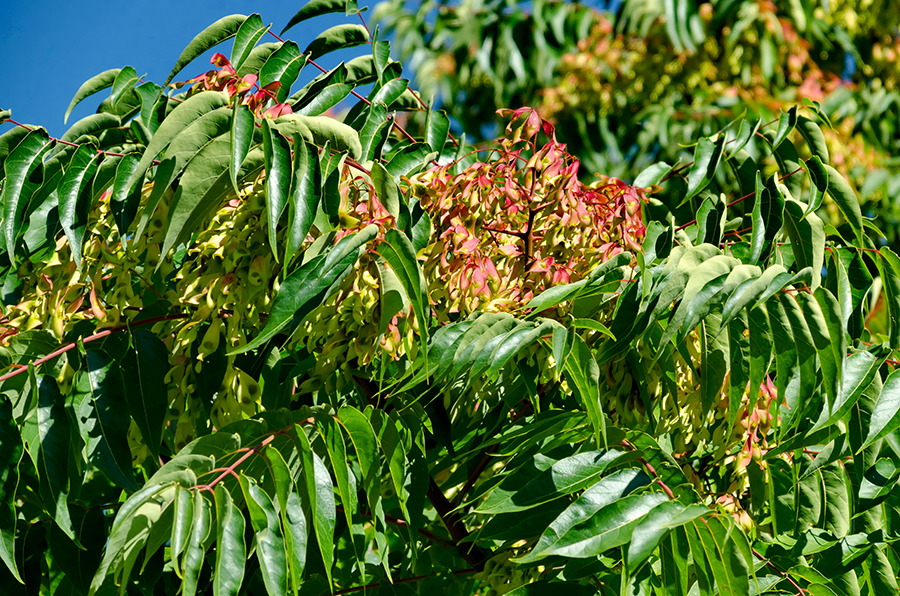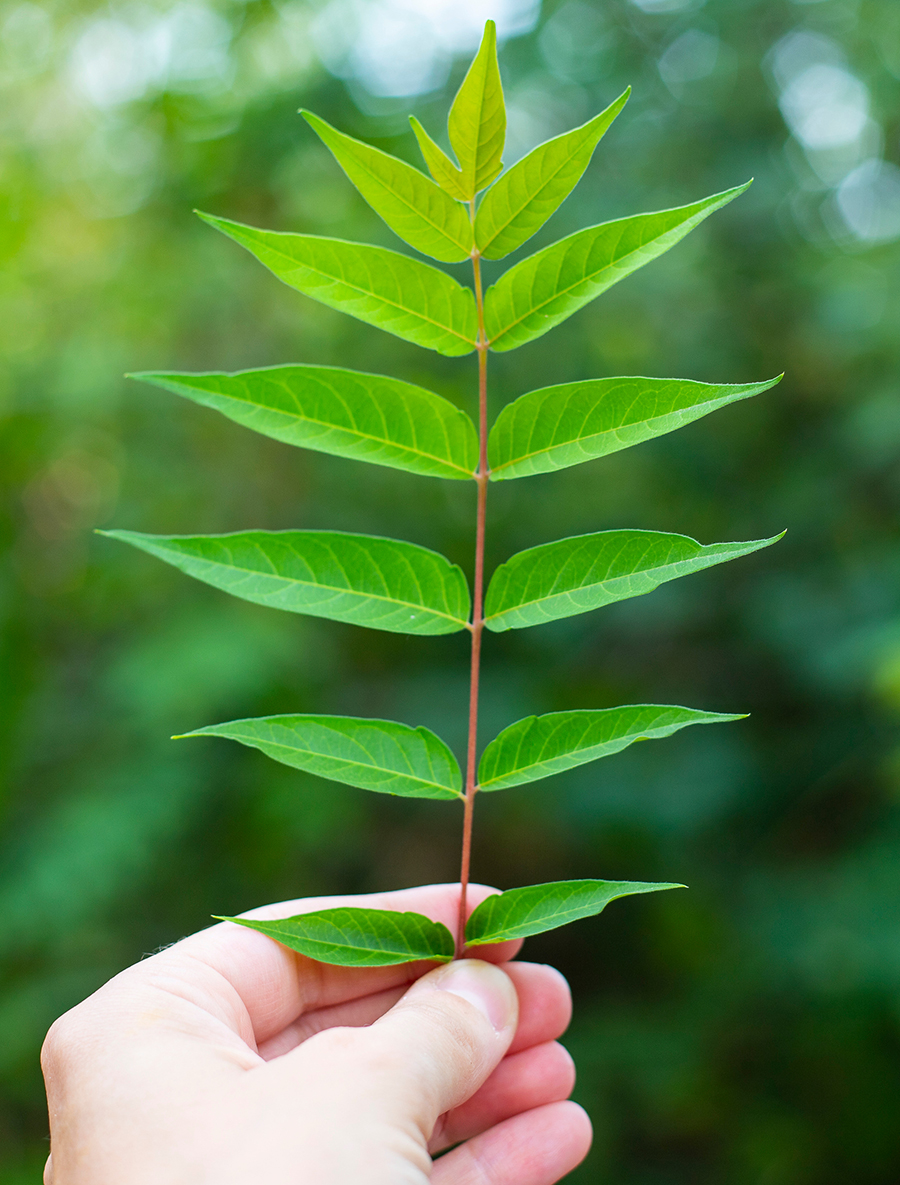By Melissa Wagoner
When Pam Russell and her husband purchased their home in Silverton in May 2021, they were excited to have a place of their own for the first time in 15 years. Newly retired empty-nesters, the couple thought they might take up gardening on the small plot of land. That’s when they discovered an interloper that just would not go away – the tree of heaven.

“The neighbors have a tree that was damaged in the ice storm,” she said of the first time the parent tree caught her eye.
Then spring came and tiny seedlings started popping up everywhere, even inside patio pots.
“Tree of Heaven (Ailanthus altissima) is a highly invasive broadleaf tree,” Brooke Edmunds – the community horticulturalist for Marion and Polk County – confirmed. Noting that, because of these invasive tendencies, she and her colleagues are continually answering questions, directed toward the Master Gardener Help Desk, about how best to deal with unwanted seedlings.
“The root system of tree of heaven is also known to invade sewer and septic systems. It can crack building foundations,” she said listing the many issues the plant’s unchecked growth can cause. “The tree has a ‘weedy’ growth habit and sends up root sprouts. And to top it off, it smells bad and the branches are prone to breaking off in the wind and ice.”
But how did it get here in the first place? 
“The tree of heaven… is native to China, where its leaves, roots and bark were used in traditional herbal medicine,” Ana Farris, the Botanical Curator and Horticulture Supervisor at The Oregon Garden, said of the plant’s origin story. “It was introduced to Europe in the early 1700s because of its appeal as an attractive ornamental. By the late 1700s it had been brought to the United States; the first documented sighting in Oregon was in Wasco County in 1904.”
And since that date it has continued to spread, popping up in yards and gardens across the state, including at The Oregon Garden where continued vigilance by the horticulture staff is required to keep the plant in check.
“At The Oregon Garden we control it by cutting down the stalk and applying an herbicide to the freshly cut stem, making sure to apply it directly to the cambium layer of the plant to ensure it is absorbed into the vascular system,” Farris described. “This prevents the plant from suckering after being cut down. We typically use a product called Tordon which can be found at your local farm store such as Wilco.”
It’s the most effective method for the tree’s removal, according to both Farris and Edmunds who cautioned, “just cutting the tree down does not mean that you are rid of the problem.”
Rather, parent trees can continue to produce shoots along a root system up to 100 feet away.
And for those – like Russells’ neighbor – whose property already boasts a mature tree, Edmunds stressed the importance of hiring a certified arborist because there is never an instance where continued growth of this tree should go unchecked.
“This plant is on Oregon’s Noxious Weed list and should not be planted,” she stated, going on to suggest that, once the trees and seedlings have been removed, planting a native tree would be a more appropriate choice.
“Check out the OSU Extension guide ‘Selecting, Planting, and Caring for a New Tree’ for ideas to fit your location,” she recommended.
Similarly, Farris added, “If you are looking for an alternative to tree of heaven that will also have beautiful fall color, consider staghorn sumac (Rhus typhina), smooth sumac (Rhus glabra), green ash (Fraxinus pennsylvanica), black walnut (Juglans nigra) or sweet gum (Liquidambar styraciflua).”
Just don’t “for heaven’s sake” continue to let them spread.